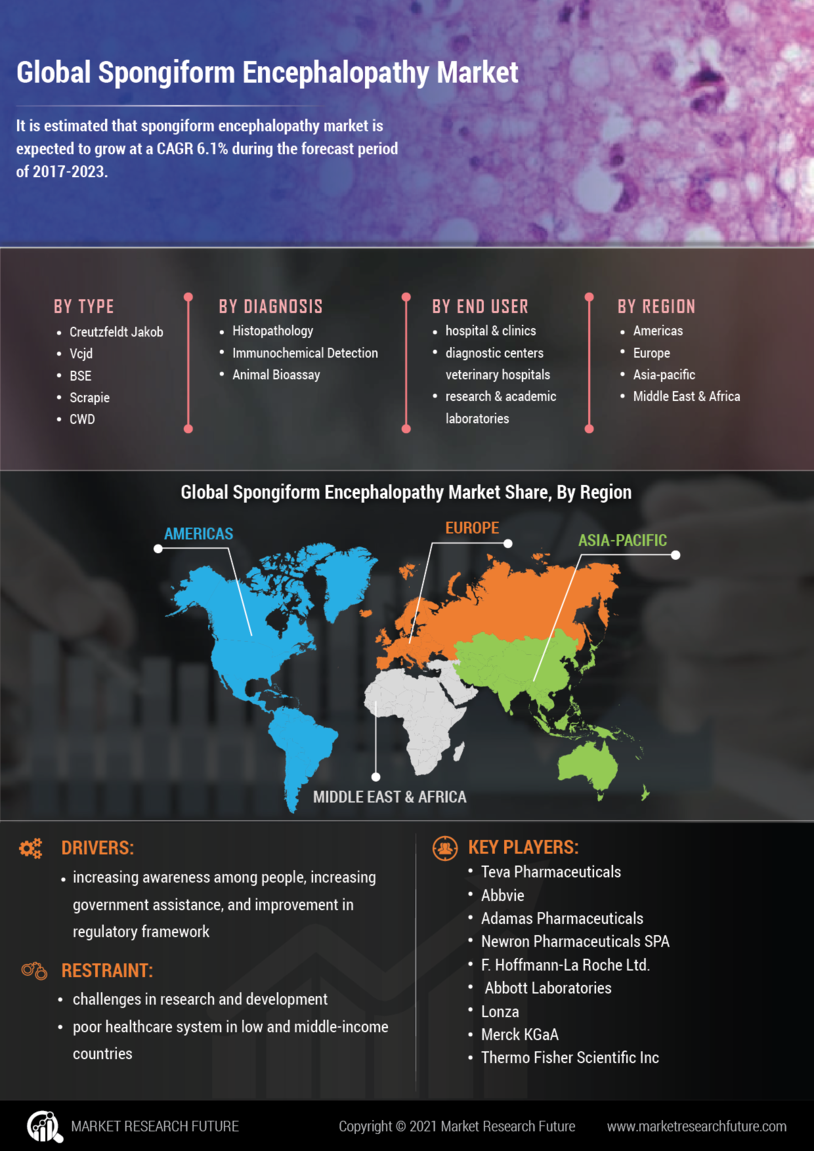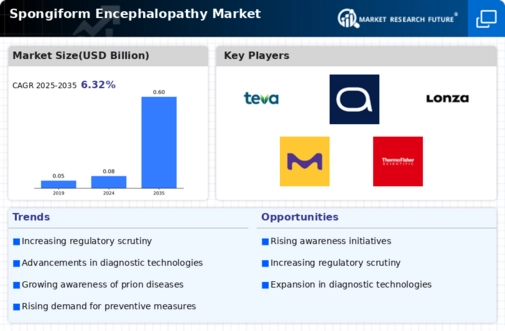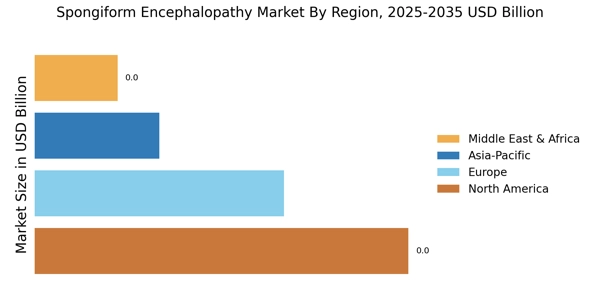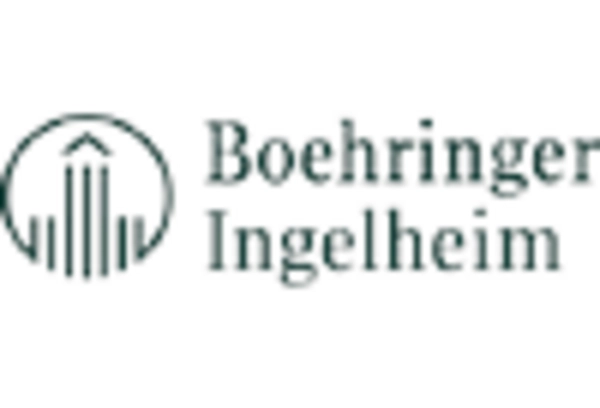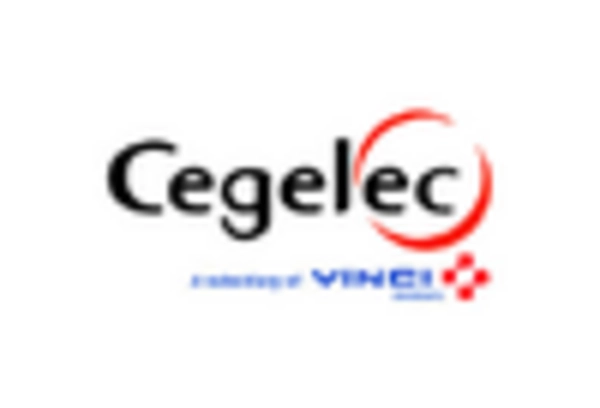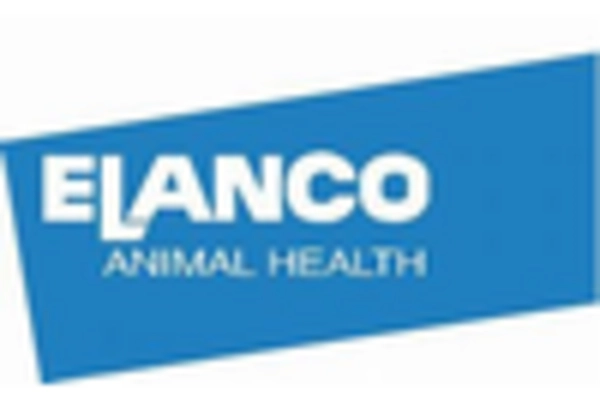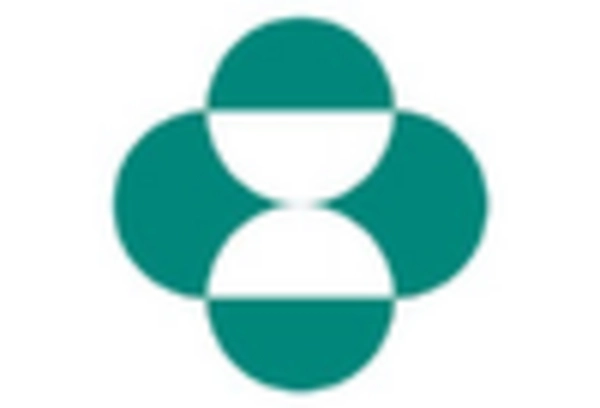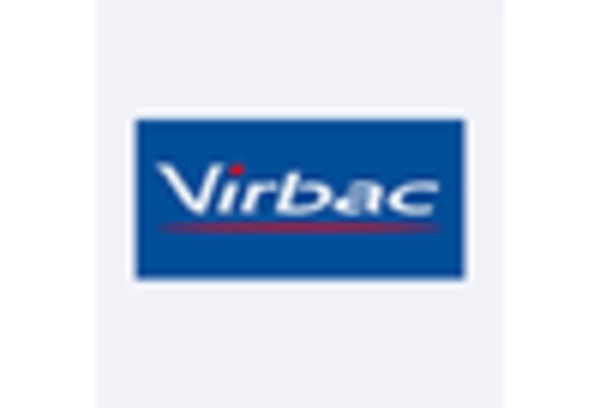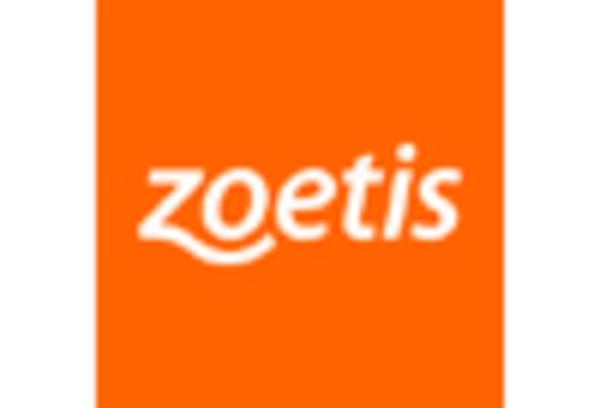Increased Research Funding
The surge in research funding dedicated to understanding prion diseases is likely to have a profound impact on the Spongiform Encephalopathy Market. Governments and private organizations are recognizing the need for more effective treatments and preventive measures, leading to increased investments in research initiatives. This influx of funding is expected to accelerate the development of novel therapeutic agents and innovative diagnostic technologies. As research progresses, new findings may lead to breakthroughs that could reshape the market landscape. The potential for collaboration between academic institutions and pharmaceutical companies may also enhance the pace of innovation, further driving market growth.
Consumer Awareness and Education
The growing consumer awareness regarding prion diseases and their implications for health and safety is emerging as a significant driver for the Spongiform Encephalopathy Market. Educational campaigns aimed at informing the public about the risks associated with prion diseases are likely to influence consumer behavior and purchasing decisions. As consumers become more informed, they may demand higher standards of food safety and transparency from producers. This shift in consumer expectations could compel manufacturers to invest in better testing and quality assurance measures, thereby expanding the market for diagnostic and therapeutic products. The interplay between consumer awareness and market dynamics may lead to a more robust and responsive industry.
Rising Incidence of Prion Diseases
The increasing incidence of prion diseases, such as Bovine Spongiform Encephalopathy Market (BSE) and Creutzfeldt-Jakob Disease (CJD), appears to be a significant driver for the Spongiform Encephalopathy Market. As more cases are reported, there is a heightened demand for diagnostic tools and therapeutic solutions. The World Health Organization has noted a rise in reported cases, which may lead to increased funding for research and development. This trend suggests that healthcare providers and governments are likely to invest more resources into combating these diseases, thereby expanding the market for related products and services. Furthermore, the potential for zoonotic transmission raises public health concerns, prompting regulatory bodies to enforce stricter measures, which could further stimulate market growth.
Regulatory Framework and Compliance
The stringent regulatory framework surrounding food safety and animal health is a critical driver for the Spongiform Encephalopathy Market. Regulatory agencies are implementing rigorous testing protocols for livestock and food products to prevent the spread of prion diseases. Compliance with these regulations necessitates the use of advanced diagnostic tools and surveillance systems, which in turn fuels market growth. The economic impact of prion diseases on the livestock industry has prompted governments to allocate substantial resources for monitoring and control measures. This proactive approach not only safeguards public health but also enhances consumer confidence in food safety, thereby creating a favorable environment for market expansion.
Technological Innovations in Diagnostics
Technological advancements in diagnostic methods for prion diseases are likely to propel the Spongiform Encephalopathy Market. Innovations such as real-time quaking-induced conversion (RT-QuIC) and other sensitive assays are enhancing the ability to detect prions in various biological samples. These developments not only improve diagnostic accuracy but also reduce the time required for testing, which is crucial in managing outbreaks. The market for diagnostic tools is projected to grow significantly, with estimates suggesting a compound annual growth rate of over 10% in the coming years. As healthcare systems increasingly adopt these technologies, the demand for effective diagnostic solutions will likely continue to rise, thereby benefiting the overall market.
